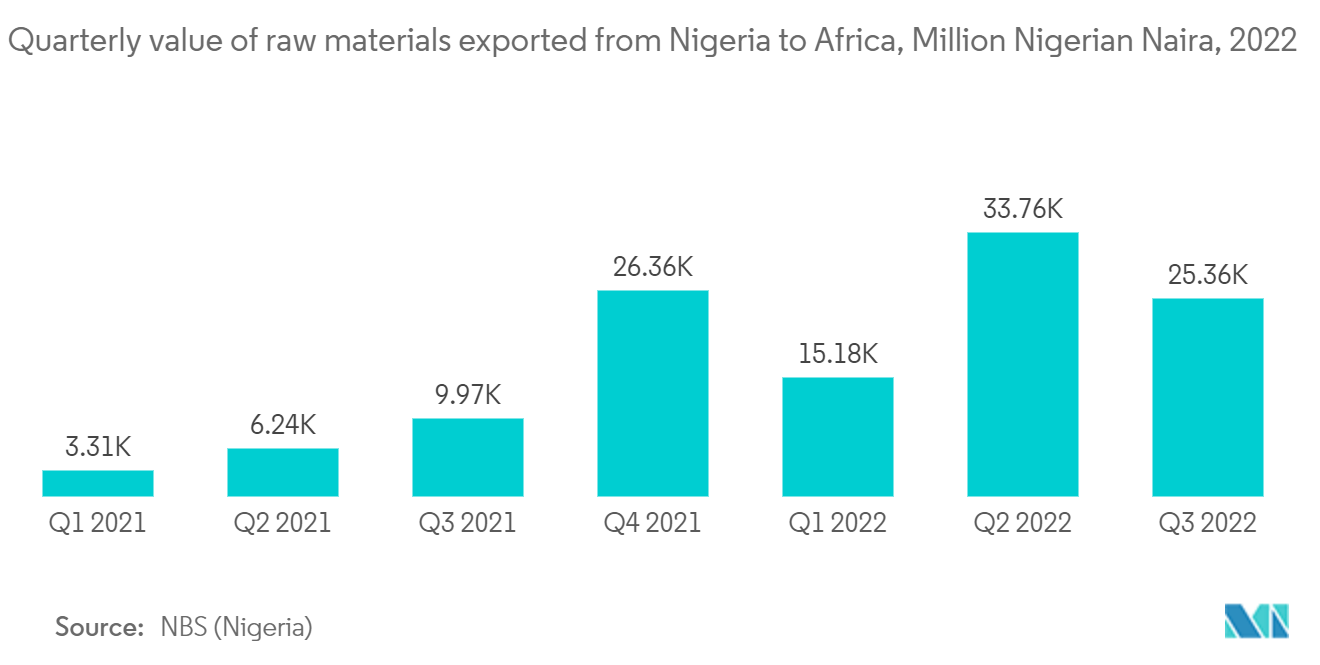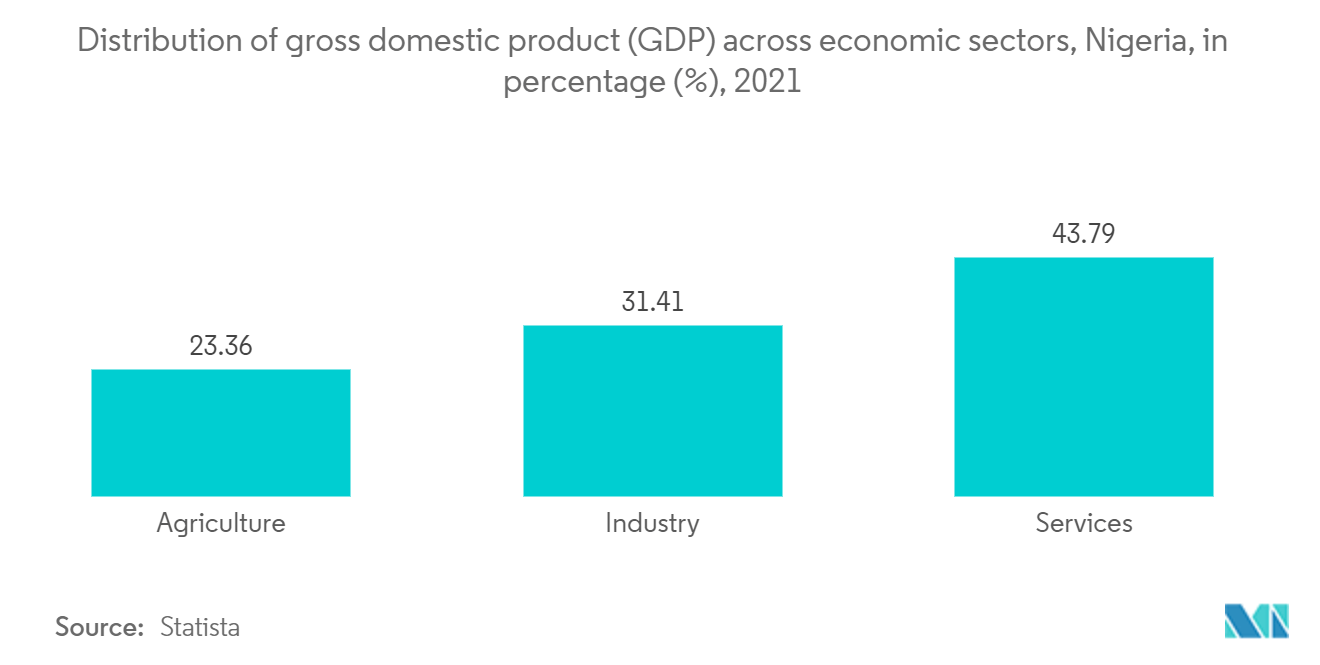Market Trends of Nigeria Third-Party Logistics (3PL) Industry
This section covers the major market trends shaping the Nigeria Third-Party Logistics (3PL) Market according to our research experts:
AfCFTA to Increase Intra Regional Trade
The intra-Africa trade was currently limited to 15% of Africa's total trade, indicating a fragile intra-regional value chain compared to Asia, which is at 80%. With the introduction of the African Continental Free Trade Agreement (AfCFTA), the world's largest free trade zone signed by 54 countries and expected to revolutionize trade across the continent, the trade volume and hence the economy of the continent is expected to grow significantly.
The agreement will focus on increasing production capabilities in an exceedingly competitive global landscape. With the agreement implemented, the manufacturing and production of essentials and value-added products will increase, improving economic diversification and accelerating structural transformation, increasing investments, and decreasing the dependence on labor forces. Thus, shaping the competitiveness of the African economy through productivity gains.
According to the World Bank, if fully implemented to harmonize investment and competition rules, the trade pact could increase regional income by up to 9%, to USD 571 billion. It has the potential to generate nearly 18 million new jobs, many of which will be higher-paying and higher quality, with women benefiting the most. The resulting job and income growth could help up to 50 million people escape extreme poverty by 2035.
According to the report, Making the Most of the African Continental Free Trade Area, increased FDI could boost Africa's exports by up to 32% by 2035, with intra-African exports increasing by 109%, particularly in the manufactured goods sector. Tunisia (165%), Cameroon (144%), Ghana (132%), Tanzania (126%), and South Africa (61%) will all see an increase in intra-African exports.

Increased manufacturing output and exports in Nigeria
The project Make in Nigeria for Export (MINE) is a presidential initiative to develop the "world-class" Special Economic Zones (SEZs) across Nigeria and boost the manufacturing of "Made in Nigeria" goods for export, regionally and globally.
The project aims to increase the manufacturing sector's contribution to GDP to about 20%, create 1.5 million new direct jobs and generate over USD 30 billion yearly by 2025. The Federal Executive Council (FEC), the Economic Management Team (EMT), and Project MINE's Steering Committee the country will be working under the sustainable Public-Private Partnership (PPP) model to develop SEZs across Nigeria.
According to the National Bureau of Statistics (NBS), Nigeria's manufacturing sector grew by 5.89% (year on year) in real terms in Q1 2022, an increase of 3.61% from the previous quarter's growth rate of 2.28%. The sector's nominal GDP growth rate was 11.72% year on year in Q1 2022, a decrease of 20.38% from the same quarter in 2021 (32.10%). The sector contributed 10.20% to overall GDP in real terms in Q1 2022, up from 9.93% in the first quarter of 2021 but down from 8.46% in the fourth quarter of 2021.
Manufacturing encompasses the production of cement, food, drinks, and tobacco products; textiles, clothes, and footwear; wood and wood products; pulp paper and paper goods; chemicals; and pharmaceuticals. The manufacturing sector also includes the manufacturing of non-metallic products, plastic and rubber goods, electrical and electronic goods, basic metals and iron and steel, motor vehicles and their assembly, and other goods.
According to the Q1 2022 GDP report, the manufacturing sector grew by 5.89% year-on-year, an increase of 2.49% over the same period in 2021 and 3.61% points over the previous quarter in Q4 2021. In nominal terms, the sector's growth rate was -2.96% quarter on quarter. However, the sector's growth rate in real terms was 2.85% quarter-on-quarter.


